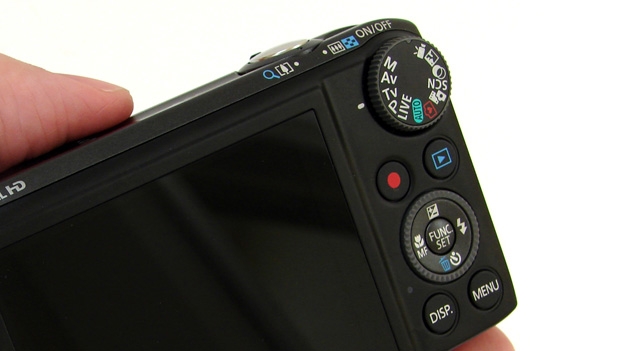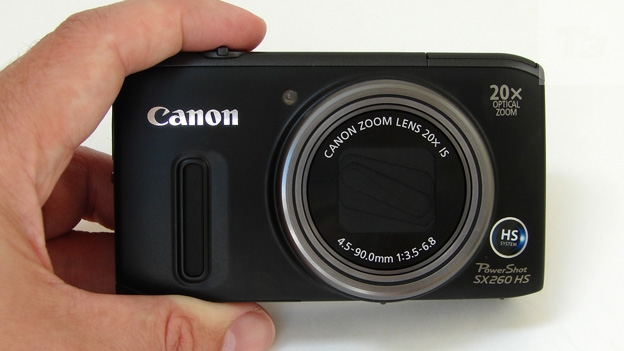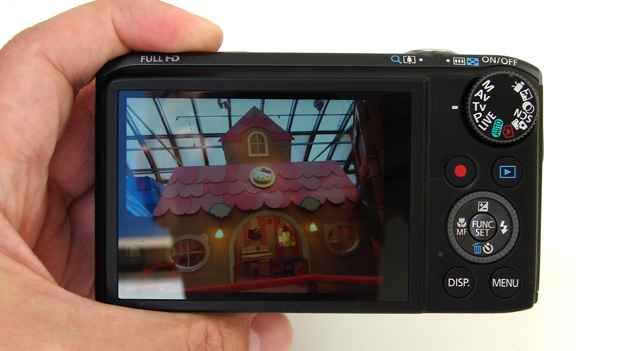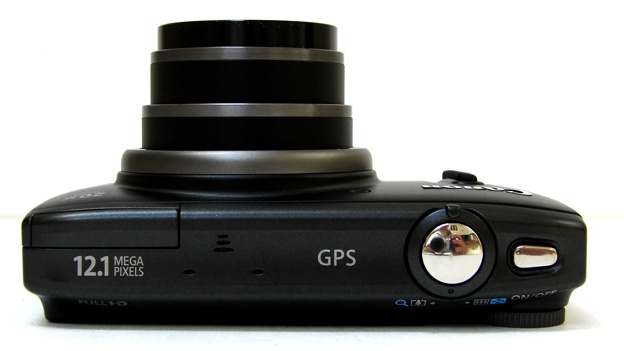Canon PowerShot SX260 HS review
The Canon PowerShot SX260 HS packs a 20x optical reach plus GPS tagging


-
+
Easy to use
-
+
Optical zoom works on video
-
+
Vibrant
-
+
colourful images
-
-
High-ish price
-
-
Average battery life
Why you can trust T3







The Canon PowerShot SX260 HS has a wide focal range within a pocket-sized body that includes GPS. Is this all-in-one worth your cash?
With every camera manufacturer fielding a 'travel zoom' this summer – the pitch being that you get a much longer lens reach than your Smartphone can manage, but the actual camera will still fit in a pocket – Canon has entered the fray with its 20x optical zoom Canon PowerShot SX260 HS.
This sits just above the equally new SX240 HS model that, unlike its bigger brother, doesn't include GPS. Both cameras offer a focal range equivalent to an ultra wide angle 25-500mm on a 35mm film camera, supported by lens-based image stabilisation, and update the previous SX230 HS model.
Available in four colours, the SX260 HS matches chief rivals in the Panasonic Lumix TZ30, the Sony Cyber-shot HX20V and the Nikon Coolpix S9300 for specification. Along with that big zoom we also get built-in GPS, though the Canon's top resolution is a modest 12.1 megapixels, against the Panasonic's 14MP and the Sony's 18MP.
Pixels aren't everything of course, as indicated by the 'High Sensitivity' HS suffix, which here refers to the SX260's marriage of a back illuminated yet standard-sized 1/2.3-inch CMOS sensor with a Digic 5 processor, as found in Canon's DSLRs.
The hope is that this will prevent grainy images in lower light conditions if you're not using the pop-up flash neatly sunk into the Canon's top plate, even if the maximum lens aperture is a not-so-bright f/3.5 (the lower the number, the more light let in).
The PowerShot SX260 HS retails for a manufacturer's suggested £329.99, which puts it at the top end of its class with Panasonic and Sony competitors. As street pricing is a more realistic £260 to £299 however, could this be your perfect travel companion for those spur-of-the-moment holiday snaps and Full HD videos?
Canon PowerShot SX260 HS: Controls
A familiar mix of plastic and metal, the SX260 HS feels reassuringly solid when gripped in the palm. The Canon's design is more practical than it is cool, its large and obvious buttons majoring on ease of use rather than fashion conscious minimalism.
Thus we get a Smarties sized shutter release button with just the right amount of give encircled by a broad lever for operating the zoom via the forefinger. A power button sits slightly indented to its right, requiring a firm press and thus avoiding accidental activation.
The backplate features a multi directional control pad encircled by a reassuringly stiff scroll wheel – we hate anything that feels too loose and therefore fiddly to be precise with – both of which are used for tabbing or scrolling through menu functions or saved images.
Get all the latest news, reviews, deals and buying guides on gorgeous tech, home and active products from the T3 experts
Separate video recording and playback buttons also feature, as do self-explanatory display and menu buttons. Ticking the final box for essential features is a shooting mode dial, here the size of a five pence piece and jutting out slightly from the body to enable settings to be alighted upon with a spin of the thumb.
Canon has crammed 12 settings around this dial, including full manual as well as fully automatic 'Smart Auto' control, comparing any subject before the lens with 58 on-board presets to find the closest/most suitable settings match.
Also on the dial is a Live View Control, which is similar to Olympus' Live Mode, though less flashy, in that it allows rudimentary tweaking of exposure (light/dark), colour temperature and saturation (cool/warm, neutral/vivid) by tabbing left or right along an on-screen slider. Resulting image adjustments are visible in real time.
Again, the idea here is to simplify operation for those who want to venture beyond pointing and shooting but are turned off by talk of apertures and yep, 'colour temperature'. And straightforward it indeed is.
Canon PowerShot SX260 HS: Screen
With finger controls over at the right hand side of the camera, three quarters of the Canon PowerShot SX260 HS' back plate is taken up with a standard 4:3-aspect ratio (non widescreen) LCD. There's no additional viewfinder, which used to be at one time where Canon's PowerShot range differed from the more streamlined, more fashion conscious Ixus family of compacts.
At 3 inches in size, the screen resolution here is a respectable if not quite class leading 461k dots, though it's still not easy to make out fine detail whether shooting indoors or out. We found the LCD to be more a tool to get your shot framing and composition spot on; it's still better to review the results on a desktop monitor.
Canon PowerShot SX260 HS: Battery
With a mains charger provided in the box, the Canon PowerShot SX260 HS is supplied with a rechargeable lithium ion battery that will deliver 230 pictures from a full charge, or more than 300 minutes of picture playback, if the GPS facility is deactivated.
Incidentally GPS is either switched on or off by delving into the set up menu – there's not a dedicated GPS setting on the mode dial which might have been helpful.
This power performance is pretty par for the course however, being no better or worse than most of its rivals. That said, the Panasonic TZ30 offers up to slightly better 260 pictures and the Sony HX20V a more impressive still 320 shots.
Canon PowerShot SX260 HS: Image quality
Best quality JPEG format 12 megapixel stills are achieved on the Canon PowerShot SX260 HS by selecting a Large size, Super Fine quality image option from the left-of-screen menu bar. This is summoned up with a press of the function/set button at the centre of the backplate command dial.
Shooting handheld at maximum 500mm equivalent telephoto setting, with a raised rubber strip at the front helping steady the camera, we were able to achieve satisfying results with plenty of detail and mostly sharp too. Under bright conditions however this camera appears to struggle to preserve highlight detail if left on Smart Auto.
When taking pictures of landscapes the camera will bias foreground detail for example, so that backdrops of skies can appear completely white. Luckily then there are manual exposure settings to fall back on.
At maximum wide-angle there is some slight softening of detail towards the very corners of the frame, but this is well hidden and only really noticeable if you're actively searching for any imperfections, as is purple pixels tracing the outline of darker subjects where they meet a bright background.
The full extent of the zoom can be accessed when shooting movies too. The stereo microphones on the top plate did pick up a slight mechanical buzz as we zoomed in or out, but ambient noise in most environments would disguise this.
With no alternative option but to rely on auto focus, the picture can go momentarily soft if framing is adjusted, but this is true of the vast majority of stills cameras.
In terms of attempting low light shooting without flash, images are impressively noise/grain free up to and including ISO1600. At top whack low light ISO3200 setting, a gritty appearance is avoided too, though image detail is marginally softer around the edges.
It seems that not over burdening the sensor with pixels has avoided signs that the camera is struggling in less than ideal conditions. Which is a good thing.
Canon PowerShot SX260 HS: Verdict
The Canon PowerShot SX260 HS is a thoroughly competent snapshot camera. It packs in all the essentials for anyone looking for a camera that, if you're not bothered about interchangeable lenses, is suitable for committing a wide range of subjects to card, yet can still be squeezed into a pocket.
Having said that, in terms of image quality and handling for us it's not decisively ahead of its Sony or Panasonic rivals that can be bought for the same price, nor the Nikon Coolpix S9300 that can be had for £30 cheaper.
We marginally prefer the Canon images' warmer default look compared with the flatter appearance of its Nikon rival. Incidentally, for anyone who is considering this travel zoom as a holiday accomplice, a 40-metre depth waterproof case is also optionally available for the SX260 HS.
Canon PowerShot SX260 HS availability: Available now
Canon PowerShot SX260 HS price: £329.99

Gavin Stoker has been writing about photography and technology for the past 20 years. He currently edits the trade magazine British Photographic Industry News - BPI News for short - which is a member of TIPA, the international Technical Imaging Press Association.